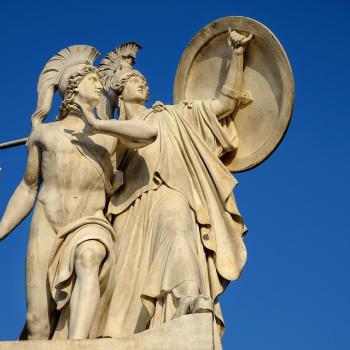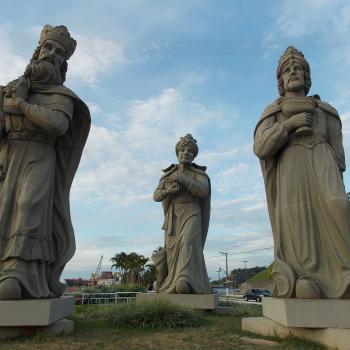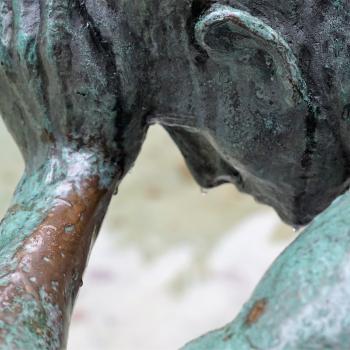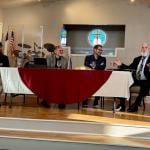My apologies for missing a few posts while I sailed the deep blue sea . . . and visited Ephesus, one of the most important cities of the Byzantine empire throughout the 3rd, 4th, and 5th centuries. (Consider it blog research … with champagne.) Even today, its ruins are glorious, confetti from ancient glory—pillars lining grand avenues with marble pavements, the echoes of small shops lining the route, the public toilets (okay, not so much glory there). Perhaps Paul, who lived in Ephesus for at least two years, had a little tent store along the way: Tents for Two, or Trusty Tents.
The shadows of terrace apartments stagger up the hills from the main avenues, and the marketplaces and plazas echo with the memories of common life. The shell of the Library of Celsus still offers the coolness within that a modern library gives off when you walk in from a hot street.
You turn hushed, wrecked corners, passing a downed statue or crumbling wall, and you wonder about Paul’s morning walk to the market, or his evening gospel meetings. “I will stay on at Ephesus until Pentecost,” he wrote, “because a great door for effective work has opened to me, and there are many who oppose me” (1 Cor. 16.8). Partnering there with Aquila and Priscilla, and with his “traveling companions from Macedonia,” Paul first preached to his fellow Jews in their synagogue, and then rented out a lecture hall to declare the gospel to ever-increasing crowds. He was so effective that the local idol trade—silversmiths making images of Artemis, their favored goddess—was losing business. “Paul has convinced and led astray large numbers of people here in Ephesus…” they whined.
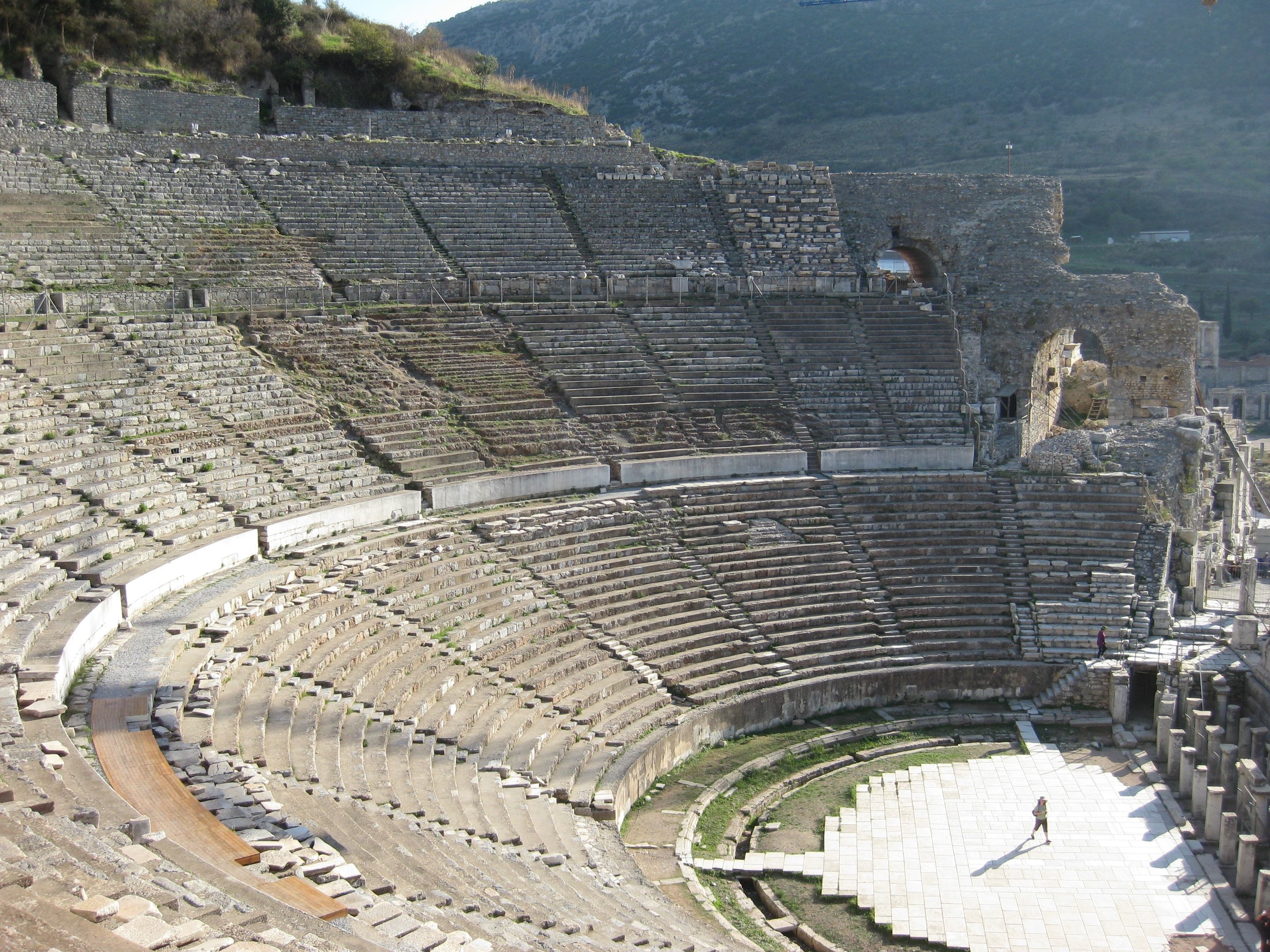
The theater in Ephesus, which can hold 25,000, practically demands that you think of the riot against Paul’s missionary activities. There the crowd screamed for two hours: “Great is Artemis of the Ephesians!” We stood there on the stage, looking up at the silent, sullen seats where so many violently resisted Christ, preferring the many-breasted goddess whose image, they believed, had fallen from the sky … preferring stone and silver to Jesus, Light from Light, true God from true God.
Artemis’ temple was there too, one of the Seven Wonders of the Ancient World. Though it is now mostly gone, statues of her still stand. This, then, was the one whose worship Paul’s good news interrupted:
Wandering through the vast deserted city (actually, scurrying from the shade of one Doric column to the next because of the blistering heat), it became very clear to me how radical, how life-giving, how astonishing was the gospel in that age. Instead of a huntress goddess who needed to be appeased and entertained, Paul offered the story of a God whose compelling love brought him directly into our world, to share our life, and by death to conquer our greatest enemies—death and the sin that causes it. There on those ancient chipped pavements on which festival processions of sacrifice to Artemis made their way, Paul proclaimed a Lord who was himself the sacrifice that once and for all reconciled the world and God.
For this, he was run out of town.
The apostle John also lived here for some time and may have brought Jesus’ mother, Mary, with him. So here I also imagined John—one hand holding down parchment, the other dipping a sharpened reed into a pot of ink, writing one prayerful word after another… “The Word became flesh and made his dwelling among us…” or “We proclaim to you what we have seen and heard…”
Here Paul and John, Priscilla and Aquila, probably Apollos and Timothy and Peter, all conspired to be living kiosks of the great Message. They were anomalies, aliens, oddities, filled with passion for some Jewish prophet and insisting that this man who had been just one more Roman victim was actually the Creator of the Universe, come to bring them home.
[It’s worth noting that Paul didn’t back down or fret about disrespect. He wasn’t terribly worried, apparently, about offending anyone. He wasn’t worried about the “reputation” of the gospel. Christians were called cannibals, atheists, and disloyal to the Empire. They were charged with immorality and hatred and subversive attitudes. They were despised and picketed and excoriated in the press. They didn’t seem to expect anything less. Far worse than a Chick-fil-a uproar.]
We sat in the shade by the side of a road and considered a Nike carving. No, not the shoe, the winged goddess of victory. It was still there hundreds of years after Paul and John were dust in the ground. It was there when the Council of Ephesus convened there in 431. More than 250 bishops, their secretaries and assistants and servants, all gathered to wrestle with this mystery of Jesus. There they preached and prayed (and argued and fussed), but unlike Paul and John, they probably dominated the market and culture. Not unlike a political convention.
Those bishops are also gone, and the walls have fallen and the columns have slumped and the weeds have grown over the pavement. But Paul’s words, John’s visions, the bishops’ discernment—these remain. Not in crevices and ruins and museums, but in a living Victory celebrated in song and prayer and creed, in shared passion and great joy in the hope that comes with Jesus.
Ephesus eventually succumbed to earthquake, invasion, and simple attrition as the harbor silted in and it lost its premier position as a trade city. But it was still vital in those years we’re examining, and so, next week, let’s listen in on a “conversational echo” from those years between Gregory of Nyssa and Eunomius.
Note to Reader: This series on Trinitarian Spirituality explores the history and spirituality behind the shaping of the Nicene Creed using Khaled Anatolios’ Retrieving Nicaea: The Development and Meaning of Trinitarian Doctrine (Grand Rapids, MI: Baker Academic, 2011) as guide and inspiration. It’s best to begin at the beginning: An Introduction.



